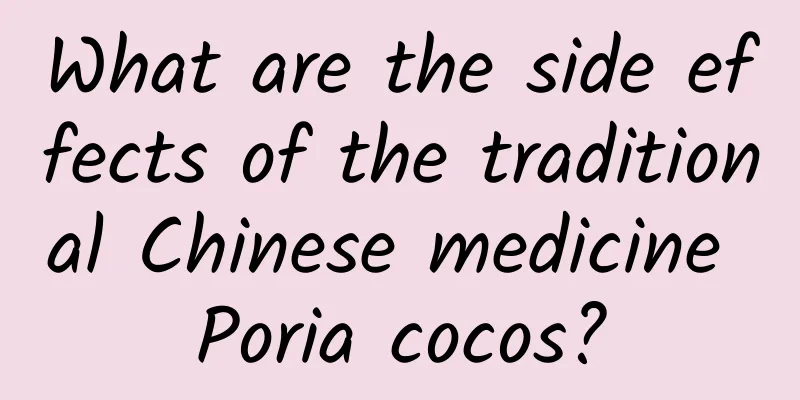The efficacy and function of horse intestine yam

|
Traditional Chinese medicine often has unexpected effects in the treatment of certain diseases, so you can choose it with confidence. However, when choosing Chinese medicine, you need to understand the medicine so that when treating the disease, you will know what kind of medicine is the best choice. Let us introduce the traditional Chinese medicine Dioscorea zingiberensis. [Other names] Trifoliate potato, wild potato [Source] Medicinal material source: The tuber of Dioscorea zingiberensis, a plant of the Dioscoreaceae family. [Original form] The horse intestine gypsophila is a twining herbaceous vine. The rhizome is horizontal, oblong, irregularly branched, with dark brown and rough epidermis, which sometimes peels off in blocks. The stem is left-handed, with longitudinal stripes, often slightly purple, smooth and hairless. The leaves are alternate, and there are usually three types: one is that the whole plant has a single leaf, and the leaf blade is heart-shaped or triangular-ovate; the second is that the leaf is single at the base of the stem, and the leaf is 3-5 or fully fissured above the middle; the third is that the leaf is 3-fully fissured to 3 leaflets, which are needle-shaped, 5-16cm long, 1.5-5cm wide, with a convex tip, a narrow and rounded base, and the base of the outer leaflet is slightly oblique and obliquely ovate. Flowers are dioecious. The male inflorescence is spike-shaped or racemose, axillary, sometimes branched, with male flowers solitary or clustered in 2-4; the perianth is purple, 6-lobed at the apex, and flattened when flowering; there are 6 stamens, 3 large and 3 small anthers, which often gather into a pitcher shape when flowering. The female inflorescence is similar to the male inflorescence. The capsule is triangular, narrow at the base, each rib is wing-shaped, nearly semicircular, dark brown and shiny when mature; there are two seeds in each locule, borne in the middle of the axis of each locule, surrounded by white or brownish-red thin wings. The flowering period is from May to August, and the fruiting period is from July to October. [Habitat distribution] Ecological environment: Growing in sparse bushes on hillsides below 600m above sea level or in cracks in rocks along the road. 【Nature and flavor】 Bitter; slightly cold; poisonous 【Functions and indications】Detoxification; dispersion of blood; reduction of swelling. Mainly used for carbuncle, nameless swelling, traumatic injury [Usage and Dosage] For oral use: decoction, 6-12g. For external use: take appropriate amount and mash it for application. 【Note】 Pregnant women should not take this medicine. 【Excerpt】 Chinese Materia Medica Through the introduction of the above content, we can understand that Dioscorea zingiberensis plays a very important role in some diseases. The consumption of the Chinese medicine Horse Intestine Dioscorea should also be determined according to each person's physical condition. Remember not to use the medicine blindly. |
<<: The efficacy and function of scutellaria root
>>: The efficacy and function of hemp leaf hydrangea
Recommend
Six close encounters with Jupiter reveal the mystery of the Great Red Spot that has existed for more than 350 years
On a clear night, you can often see a very bright...
Gastrodia elata capsules
In our daily life, if we work for a long time wit...
What are the contraindications for eating Ganoderma lucidum spore powder?
Although Ganoderma lucidum brings us a lot of con...
The beautiful Rudina chicken is actually an expert in egg production
Recently, a blogger shared his daily life of rais...
Beware! Summer may bring more dangerous insects than just mosquitoes!
If we talk about the most annoying insects in sum...
What are the effects of Chinese medicine Poria cocos
Poria cocos is a traditional Chinese medicine, an...
Black technology in future agriculture: How can green and intelligent fertilizers ensure that crops are well fed without waste?
Imagine that you are a farmer, carrying bags of f...
The efficacy and function of Zhifengcao
I wonder if you have heard of Zhifengcao. Zhifeng...
White steamed buns, white rice... Are staple foods such as rice and flour better the whiter they are?
Rice and flour are indispensable cereal foods in ...
The efficacy and function of string bells
As people's living standards improve, they pa...
After Shanghai, Jiangsu is experiencing hail! What kind of weather phenomenon is this hail that looks like both fertilizer and sugar?
Edit: Corner On February 22, according to the Nan...
Effects and functions of Chinese medicine Eupolyphaga sinensis
Have you ever heard of the Chinese earthworm? If ...
Harmful substances appear! Many people in Japan have excessive levels of organic fluorine compounds!
Audit expert: Gan Qiang Lecturer at Beijing Insti...
Stop saying that children have ADHD, it seems that adults also have it?
Speaking of "ADHD", it sounds like a di...









